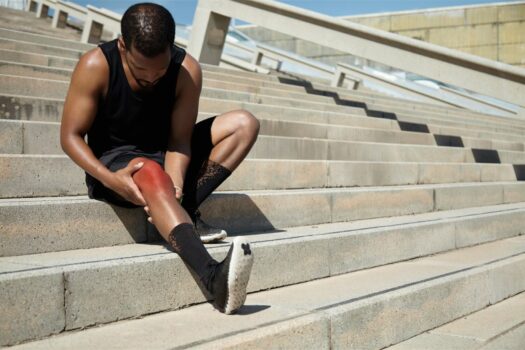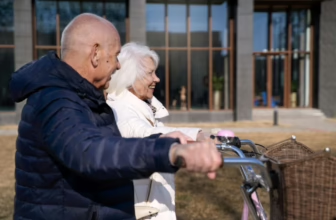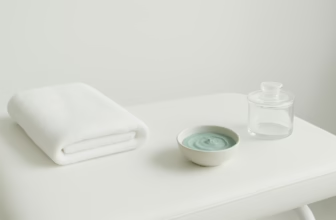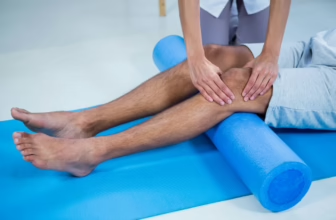Knee injuries are common among athletes. Sudden stops, turns, and twists, as well as the pressure put on the knee joint, can injure the knees of a sportsperson.
A common injury of the anterior knee observed in athletes, especially jumping athletes, is a jumper’s knee. This condition mainly affects skiers, runners, and professional volleyball and basketball players.
The overall prevalence of this degenerative condition in athletes is 14.2%. But, its prevalence in professional basketball and volleyball players is 32% and 45%, respectively.
A jumper’s knee is a potentially serious condition that demands immediate attention. If left untreated, it can lead to tears in your tendons. The good news is that fixing a jumper’s knee is easy.
In this guide, we’ll share a few tips to help you manage a jumper’s knee. But before that, let’s understand what it is.
Understanding Jumper’s Knee
A jumper’s knee is commonly considered a sports injury and is more prevalent among male athletes than female.
The inflammation of the tendon, a cord-like tissue that connects the kneecap or the patella to the shinbone or tibia, is known as a jumper’s knee. As the inflammation occurs in the patellar tendon, it’s also known as patellar tendonitis or patellar tendinopathy.
Inflammation in the patellar tendon mainly occurs due to the overuse of the knee joint. Repetitive strenuous activities such as running, jumping, or other high-impact movements cause small tears in the tendon tissue, which leads to patellar tendonitis.
Weakness in the knee, swelling, and pain below the kneecap while resting or performing an activity are symptoms of a jumper’s knee.
How to Treat a Jumper's Knee? 3 Tips
The treatment of patellar tendonitis mainly focuses on reducing pain and inflammation and strengthening the knee’s soft tissues. Here, we’ve listed a few measures that may help relieve pain from the patellar tendon:
1. Scale Back on Athletic Activity for a Short Time
Until the worst of your pain passes, scale back on athletic activity for a short period of time. Pushing through pain will cause more damage to your tendon tissues. But, taking a temporary break from activities that exacerbate the condition, such as running and jumping, will minimize the stress on the soft tissues of the knees.
If your symptoms are mild to moderate, keeping yourself active can accelerate the healing process. Walking for 30 minutes per day will increase your knee’s mobility. If the pain doesn’t go away or rather exacerbates, cease all physical activities, including walking, until the injury is healed. This will give your patellar tendon a good amount of time to recover.
2. Try the Knee Pain Relief Therapy Pad
Relatively a new kid on the block, knee pain relief therapy pads are beneficial in managing a jumper’s knee.
A knee pain relief therapy pad uses Neuromuscular Electrical Stimulation technology (NMES) to strengthen the major muscle groups around the joint. Through targeted stimulation, this pain-relief device induces muscle contraction in the thighs to strengthen them and reduce stress on the knee joint.
Designed by healthcare specialists, knee pain relief therapy pads are over-the-counter devices and can be controlled through your smartphone, asserts Motive Health. That means you can adjust the stimulation level with just the click of a button. The app also keeps track of the pain level, therapy intensity, and duration for a personalized experience.
The findings of a study conducted by NIH observed a clinically meaningful reduction in knee stiffness, pain, and functional improvements in patients receiving NMES therapy at week 12.
3. Apply Ice
Applying ice on the patellar tendon can help reduce inflammation as well as alleviate pain.
Ice results in vasoconstriction, i.e., it causes the blood vessels to narrow. This decreases the blood flow to the patellar tendon, reducing pain and tenderness, decreasing swelling, and relieving inflammation.
You should never apply ice directly on your knee. You can get frostbite if you put an ice pack directly on bare skin. Instead, place ice in a plastic bag and wrap it in a towel before putting it against the skin.
You can also try ice massage to decrease swelling, pain, and inflammation. While you can use an ice cube for ice massage, an “ice cup” will be more convenient.
For ice massage, fill a disposable cup with water and keep it in the freezer until it freezes. Then, tear off the cup’s side to expose the upper lip and apply the ice gently to your knee.
Be sure to keep the ice moving in a circular motion so that it doesn’t stay in one place for too long. Stop the massage as soon as numbness is achieved. Repeat ice massage therapy two or four times daily until symptoms improve.
Putting it all together, patellar tendinopathy is a common sports injury among athletes. You might be tempted to cut your recovery time short by taking corticosteroid injections. But we advise you against them. Corticosteroid injections provide relief from pain, but they bear a risk of patellar tendon rupture.
The best treatment for patellar tendinopathy is to rest and avoid activities that can damage the already weakened tendon tissues. Taking pain relievers such as ibuprofen also helps ease the pain as well as reduce inflammation.
Most cases of patellar tendinopathy can be treated without a doctor’s intervention, though it may take a while. However, you must visit a doctor if you don’t notice any improvement in four to six weeks.
Image by wayhomestudio on Freepik
Follow me down the rabbit hole!
I'm Alice and I live with a dizzying assortment of invisible disabilities, including ADHD and fibromyalgia. I write to raise awareness and end the stigma surrounding mental and chronic illnesses of all kinds.








